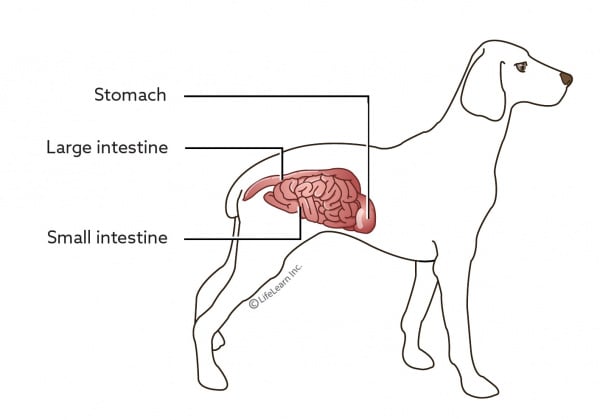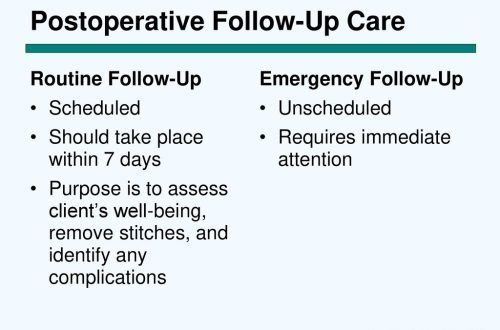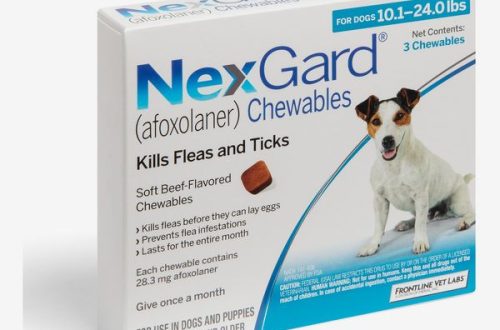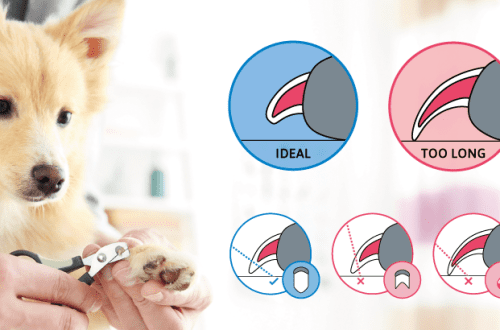
Гастроентеритис кај куче: симптоми, третман и превенција
Gastroenteritis in dogs is a common disease that is usually accompanied by diarrhea and, in some cases, vomiting. If traces of blood are observed in the stool, the dog may have hemorrhagic gastroenteritis.
Although gastroenteritis is a common disease, it causes a lot of unpleasant troubles and worries. Depending on the cause and degree of influence on the condition of a particular pet, it can be difficult to treat.
содржина
- Types of gastroenteritis in dogs
- Причини за гастроентеритис кај кучињата
- Симптоми на гастроентеритис кај кучињата
- Hemorrhagic gastroenteritis in dogs: symptoms and features
- Gastroenteritis in a dog: treatment and visits to the doctor
- Како да се третира гастроентеритис кај кучиња
- What to feed a dog with gastroenteritis
Types of gastroenteritis in dogs
Gastroenteritis is a multifaceted disease. It may present only with diarrhea ranging from soft stools to watery feces, or diarrhea with vomiting. Less often, the disease is manifested only by vomiting, although if it is localized in the stomach, veterinarians would rather call it gastritis.
Gastroenteritis is of two types: acute and chronic. Acute gastroenteritis in a dog occurs suddenly, while chronic gastroenteritis develops over weeks, months, or even years. The first type usually resolves on its own, and in other cases it progresses until veterinary treatment is carried out.

Причини за гастроентеритис кај кучињата
Any factors that affect the dog’s microbiome can lead to the disease. Among them:
- ingestion of spoiled or raw foodstuffs or inedible objects into the gastrointestinal tract;
- viruses, eg parvovirus, distemper;
- цревни паразити;
- changes in the intestinal flora;
- food allergy or hypersensitivity;
- ulcers of the gastrointestinal tract (GIT);
- cancer of the gastrointestinal tract;
- туѓи тела;
- интестинална опструкција;
- genetic disease or predisposition to it.
Unfortunately, the exact cause of the disease is difficult to establish. However, this does not mean that the dog cannot be cured. In most cases, veterinary treatments bring good results.
Симптоми на гастроентеритис кај кучињата
Gastroenteritis in dogs usually begins with soft stools that become progressively thinner. Later, signs such as mucus in the stool, straining to have a bowel movement, or having a bowel movement at home may appear. Other common symptoms include:
- loose stools or frequent bowel movements;
- tarry stool;
- large volumes of watery stools;
- крв во столицата;
- летаргија;
- анксиозност;
- стомачна болка;
- nausea, drooling, frequent swallowing;
- повраќање.
Depending on the severity and progression of the disease, the dog may show one or more symptoms.
Hemorrhagic gastroenteritis in dogs: symptoms and features
Most of all, pet owners are concerned about the form of gastroenteritis, accompanied by bloody diarrhea. In dogs, it is called hemorrhagic gastroenteritis. The new term used to describe this disease is “acute hemorrhagic diarrhea syndrome”.
Hemorrhagic gastroenteritis in dogs tends to progress quickly and can be very severe. In some cases, it can lead to pancreatitis or a life-threatening systemic disease.
The hallmark of the disease in dogs is the presence of bright or dark red blood in the feces. The following signs distinguish hemorrhagic gastroenteritis:
- stool with an admixture of mucus and blood;
- clots or pools of jelly-like bloody fluid often described as “raspberry jam”
- drops of blood from the rectum.
This form of the disease is more common in small dogs, but can develop in pets of any size.
Gastroenteritis in a dog: treatment and visits to the doctor
 Many pets with gastroenteritis look surprisingly normal. They may not show any other symptoms other than a change in the quality and quantity of stools, as well as the frequency and location of bowel movements. Dogs with hemorrhagic gastroenteritis will show more obvious signs.
Many pets with gastroenteritis look surprisingly normal. They may not show any other symptoms other than a change in the quality and quantity of stools, as well as the frequency and location of bowel movements. Dogs with hemorrhagic gastroenteritis will show more obvious signs.
Since it is difficult to determine whether the disease will progress to a dangerous state, in any case, you should contact your veterinarian. It is important not to delay a visit to the clinic if these symptoms are observed in puppies, older dogs or small breed dogs with an increased risk of dehydration. Veterinary attention is absolutely essential if your pet is vomiting, nauseated, bleeding, in pain or lethargic.
Како да се третира гастроентеритис кај кучиња
Mild cases of gastroenteritis are often preferred by owners to be treated at home. But first of all, you need to consult with a veterinarian. He will tell you exactly which methods are suitable for the pet.
Most dogs with uncomplicated diarrhea recover with simple measures, including:
A sparing diet for several days, including rice and lean sources of protein.
- Adding canned pumpkin or other easily digestible fiber to dog food. The doctor will recommend the exact amount.
- Enrichment of drinking water with electrolytes to improve hydration. This measure also requires additional consultation with a veterinarian.
- Do not exercise your dog for several days.
What to feed a dog with gastroenteritis
The role of nutrition in gastroenteritis cannot be overestimated, especially given that many of the causes are based on poor dietary choices. It is necessary to feed the dog with food that will not cause indigestion, strictly according to the regimen. Do not change food too quickly and introduce new ingredients abruptly or in large quantities.
Veterinarians generally recommend a diet low in fat and high in digestible fiber for the treatment and prevention of most cases of gastroenteritis. If your pet has food sensitivities or allergies, your healthcare provider may prescribe a hydrolyzed or novel protein diet.
Gastroenteritis is an unpleasant problem for everyone, but especially for a pet. Fortunately, veterinary medicine has been very successful in treating this disease.





